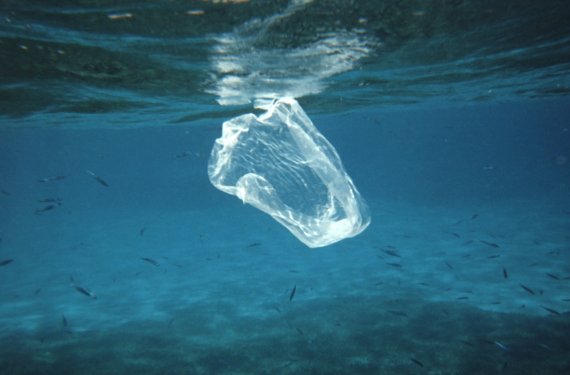© NOAA
Large amounts of plastic are dumped into the oceans daily, but no one knows where all thatplastic remains. Together with some of her colleagues, Merel Kooi (a PhD student at Aquatic Ecology and Water Quality Management) has developed a model to explain how floating plastic sinks in relation to the density and size of the particles. Some of that plastic then yo-yos back and forth under the surface of the water.
Algae growth
The driving force behind this process is algae growth. Algae attach themselves to the surface of floating plastic, causing the plastic to become heavier. As a result of this and the further growth of the algae, the plastic becomes heavier than water and sinks into the ocean. But the deeper the water, the darker it gets. The algae die, the plastic becomes lighter and finally rises again. Kooi has captured that behaviour in a mathematical model.
Only the larger particles reach the surface again during this yo-yoing
Merel Kooi
The model predicts the diverse ways in which plastic behaves in relation to its density and the size of the particles. All plastic yo-yos, Kooi said. ‘But only the larger particles reach the surface again during this yo-yoing. Particles smaller than 0.1 mm don’t. All this yo-yoing takes place in the upper 100 meters of water. The larger particles yo-yo faster than the smaller particles and across a larger part of the water column.
The question is whether or not the model accurately describes reality. Does plastic behave asKooi calculates? According to Kooi, it’s difficult to validate the theory with measurements. There are depth profiles of plastic in the oceans, but ‘practically speaking, it’s difficult to take measurements in the middle of the ocean. You need large amounts of water in order to measure the particles. So both a large amount of plastic and a large amount of water are involved. The particle density is thus low.’
It still hasn’t been proven that microplastics are actually dangerous for organisms in the ocean
Merel Kooi
Nevertheless, the behaviour predicted by Kooi is in keeping with the few studies available. Those studies show that small plastic disappears selectively from the water surface. And the speed with which the particles sink as well as the moment when they sink agree with observations actually made. According to Kooi, the growth of algae plays an important role in explaining the vertical transport of plastic in the oceans.
Fish
The question remains as to the consequences of that behaviour. Kooi takes no sides on the matter. ‘I’m not an ecologist. It still hasn’t been proven that microplastics are actually dangerous for organisms in the ocean. Is it good that small plastic particles disappear from the surface of the water? Perhaps, because birds and fish that feed at the surface won’t eat the plastic. But other fish will. Is it good that microplastics yo-yo in a relatively thin layer without reaching the bottom? We still don’t know. Nevertheless, we need to know where the plastic is if we want to answer questions about its possible effects.’

